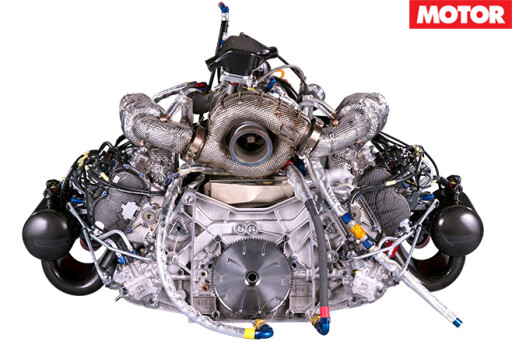
Translating the sledgehammer performance of the modern TDi engine to the road has proven difficult for manufacturers.
Not that making bucket-loads of power and torque is the issue with high performance diesels, but rather doing so and remaining within ever-tightening emissions standards is. This may see the diesel engine’s current flame burn brightly, but soon fizzle out in commercial use over the next decade.
Diesel engines are already being pushed hard and stuffed with high-end technology to counter the inherent flexibility of petrol competitors. In the past decade we have seen high pressure (30,000psi plus) Common Rail Injection, variable geometry turbochargers, and complex exhaust emission control systems to mask the lack of power at higher rpm that modern performance drivers have become used to.
The problem with the current state of diesel engineering is it’s not only extremely costly to integrate into mass production, it also adds weight to the overall powertrain (heavier and stronger engine components need to be used). It also requires specialised technicians, which in turn leads to general servicing costs being higher than for a similarly performing petrol equivalent.
A final potential nail in the performance diesel coffin is that the allowable emissions levels of NOx (Oxides of Nitrogen) and CO2 (Carbon Dioxide) – which diesels produce far more of than petrols – are being reduced with upcoming Euro 6.2+ emission standards.
With ever more fuel efficient petrol-engined hybrids near-matching the fuel economy of diesels, and lacking nothing in the way of torque and power, the stage is set for passenger car performance diesels to slowly fade into oblivion, possibly as early as 2020.
Performance diesel advocates, though, can point to a future for these engines that, although somewhat diminished, is still bright. Money is being spent on tailpipe emission control systems (such as the French PSA-designed Selective Catalyst Reduction) that can reduce NOx by up to 90 per cent and CO2 by 5 per cent.
 The real life-extender for the diesel will come with the adoption of hybrid diesel technology, with the Audi R18 Le Mans car showing how effective both diesel and electric energy can be when used in conjunction with each other.
The real life-extender for the diesel will come with the adoption of hybrid diesel technology, with the Audi R18 Le Mans car showing how effective both diesel and electric energy can be when used in conjunction with each other.
1. Turbo diesel
Audi’s 3.7-litre Mono Turbo diesel engine is small, light, and packaged neatly alongside the hybrid drive electric assist system. Despite being 100cc smaller than a Nissan GT-R engine, the Audi’s engine produces 375kW/850Nm when tuned in endurance running mode. Try getting 24 hours flat out from a petrol burning GT-R producing those numbers!
2. Energy return
Turbocharger boost runs to 2.8 bar (down from a previous rule-imposed 3.0 bar). The inlet size of the turbocharger is restricted down to a tiny 45.8mm and the fuel capacity is set at 58 litres. Without these artificial restrictions in place the compact diesel could generate upwards of 500kW.
3. Aero package
The R18 platform, even without the superb powertrain, is a race-winner on its own. The challenge for engineers was to incorporate increased cooling airflow through the car for the hybrid system whilst reducing overall aerodynamic drag. This challenge was met very effectively.
4. Smarty Pants
The processing and computing power in the R18 e-tron contains possibly the most sophisticated and advanced control algorithms of any race car in existence. So much interfacing and component networking exists to ensure a seamless operation that it simply boggles the mind.
5. Energy return
Bosch helped integrate the hybrid Motor Generator Unit into the front axle of the R18 e-tron to provide 500kJ of energy between braking phases. This means the e-tron can power each front wheel independently with plenty of electrical force when exiting corners at over 120km/h.
6. Carbon Cogs
All LMP1 gearboxes are pretty trick pieces of kit but the R18 e-tron takes this a level further by featuring a complete carbonfibre housing, This makes it extremely light and strong, but best not to ask about the cost...
TDi: The Good
It’s possible to power heavy cars effectively with rather small-displacement TDi engines. That’s why diesel engine sizes of 2.5-3.5 litres are common.
Fuel efficiency is also better. Similarly performing petrol engines will use about 30-40% more fuel. Some of the current crop can easily run 1000km between fill-ups.
Traditionally diesel engines have had greater durability than petrol engines due to higher-rated engine internals to cope with large boost and torque loads.
Also, high performance turbo diesels run cooler than petrol engines. And diesel fuel doesn’t vapour lock like petrol.
TDi: The Bad
Emission control systems are hurting the reputation of diesel engines, and with the complexity of emission control systems and high strength manufacturing, the costs will rise.
In a market where vehicles are steadily becoming cheaper, the diesel engine is becoming an increasingly expensive option.
Service costs are also higher on a diesel engine than a comparable petrol engine. Diesel engines normally hold more engine oil, use a higher grade long life oil, and require ongoing maintenance of their emission systems which can see service bills skyrocket long term.
Last but not least, diesel engines sound like rubbish.

COMMENTS